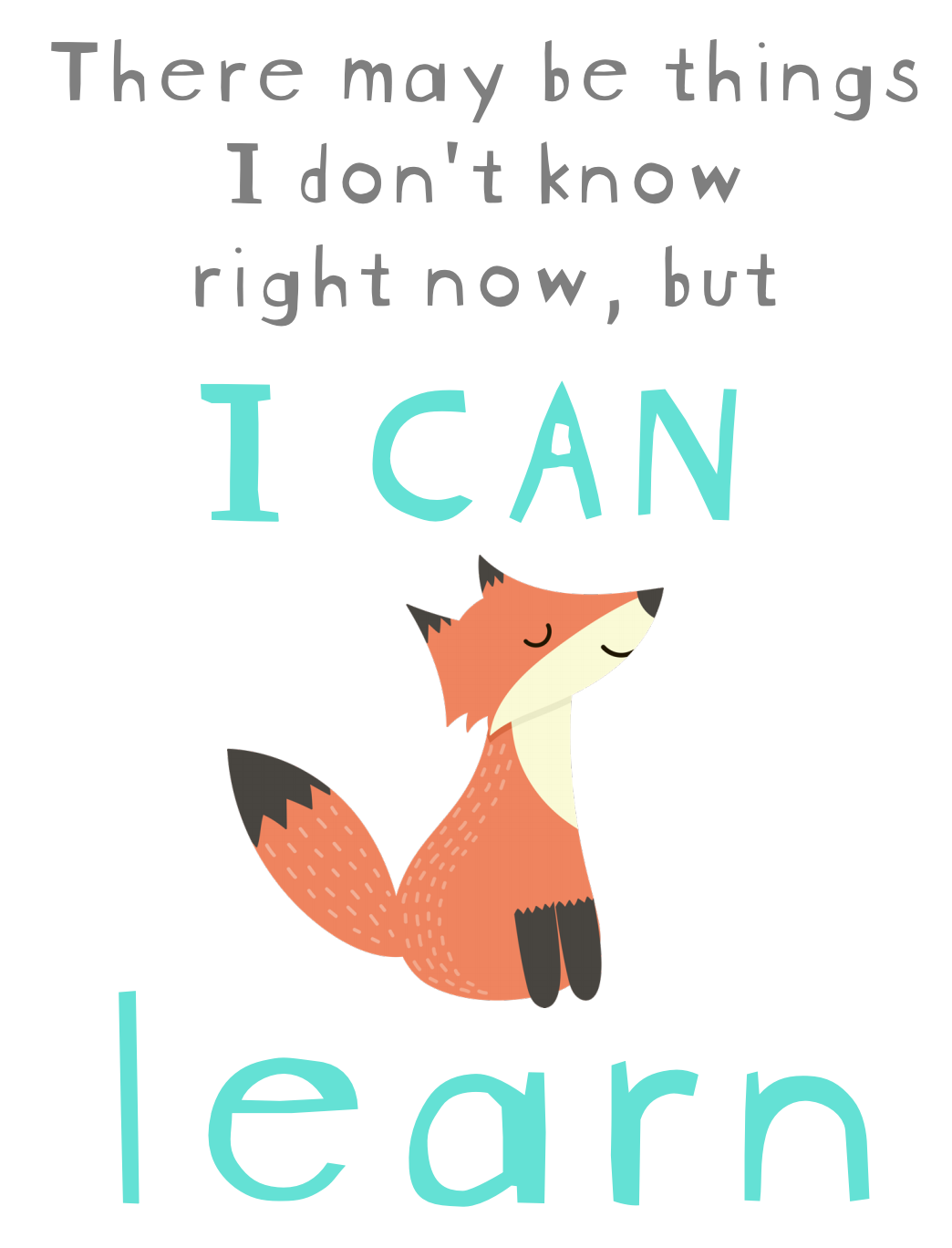Growth Mindset
“Mom, I can’t do this assignment”
“I don’t understand any of this stuff”
“ math is just too hard?”
Do these sound like something your child would say? When faced with challenges, how does your child react? Do they brace themselves and face it head-on, or do they retreat into a cocoon of defeat? While you may think this is an intelligence problem, that your child might not be bright enough, you’re mistaken. Did you know that intelligence is not set in stone, that you can increase your intelligence? Researchers have found that kids and adults alike can develop and train their brains to increase their intelligence.
A big determinant of being able to develop this intelligence is the growth mindset.
What is the growth mindset?
Before defining what the growth mindset is, you need to understand what a mindset is. It simply refers to a way of thinking, your way of thinking. It is a collection of your thoughts and beliefs which shape your thought patterns and plays a vital role in whether you succeed or not. Your mindset affects every aspect of your life, from how you think to how you feel and act. It determines whether you believe that traits such as intelligence or talent are fixed or changeable traits.
The term growth mindset was coined by Dr. Carol Dweck, a psychologist who extensively studied the growth mindset. She believes that your mindset plays an integral role in your life, and teaching it can change how you view and approach challenges.
There are 2 kinds of mindsets: the growth mindset and the fixed mindset. People with a fixed mindset think that their abilities are inborn, fixed, and unchangeable, pretty much set in stone. So for them, you are either talented or not; there’s no grey area in between. Those with a growth mindset, on the other side, believe that these abilities can be learned or cultivated and strengthened through commitment and hard work.
Take two kids, Matt and Jammie, both struggling with math. They have consistently gotten low grades on a couple of tests. Matt believes that he is just bad at math, and no amount of work will change it. So he stops trying to get better and resigns to his fate; this is a fixed mindset. On the other hand, Jamie decides not to give up because he believes that he can improve. With a bit of persistence, hard work, and commitment, he can improve his math grades. This is an example of a growth mindset.
Benefits of Growth Mindset
A growth mindset nurtures motivation, resilience, and resolution. Kids who believe that traits such as intelligence are genetic tend to give up more easily. They believe that if they can’t do something, it’s because they are not smart, creative, or good enough. However, with a growth mindset, kids believe in their abilities; all that stands between them, and success is the right amount of effort.
It fosters a love for learning as kids are not afraid to try new things. Kids with a growth mindset view challenges as something fun. Putting a positive spin on difficult things helps fuel their curiosity and confidence. This makes learning more fun for them as they have the confidence to fail without fear of looking dumb.
It teaches them to embrace challenges as they present the most learning experiences. Where those with fixed mindsets might go for easy tasks, a kid with a growth mindset is ready to learn and grow. They understand the only way to do this is through trying and failing as well as admitting that sometimes they don’t know what to do.
Since kids with a growth mindset have a healthy relationship with failure, they view every failure as an opportunity to learn. Even when they are disappointed, they can retain their confidence and bounce back. This is because they believe that they can succeed if they keep working at it.
Children with a growth mindset understand that there’s no shame in asking for help. When faced with challenges, they can confidently ask for help as they believe that they have the ability to do it; it’s just that they need a hand right now. Those with a fixed mindset are less likely to ask for help even when they make mistakes. This makes work a lot harder because they view needing help as a sign of weakness.
Ways to Teach Kids How to Have a Growth Mindset
Nurturing a growth mindset in your child can supercharge their ability to learn and grow. A big part of developing this mindset is not letting failure stop you from working to improve. Developing this mindset will help them be successful both in school and later on in life. Here are several ways to teach your little one to have a growth mindset.
Teach Them it’s Okay to be Wrong
Failure is scary to a lot of people, kids, and adults alike. When you are afraid of failing, you are less likely to try out new things. By teaching kids, it’s okay to make mistakes; you free them to try out new things. In making that effort, they will learn persistence, what works, and what doesn’t. Dr. Dweck encourages teaching your child to get over the fear of failure by telling them that mistakes help their brains grow stronger. When you easily find a solution to a problem, you don’t really learn anything. However, by making a mistake or a couple of them, you force your mind to think of a solution, learning something new in the process.
Use the Right Language
The growth mindset is heavily influenced by the language you use. Say things like, thanks for your efforts on finishing the work instead of well done for getting everything right. When praising your child, focus on the process rather than the results. Over time your little one will come to value persistence over correctness fostering the resilience required to succeed. You want to avoid saying things like, not everyone is good at math; this will make your child think it’s okay to give up. Instead, you can say that many people struggle with math, yet they still keep trying. The word ‘yet’ has proven to be quite powerful when fostering the growth mindset.
Focus on How they Solve the Problem
This doesn’t mean only ensuring that they followed all the right steps when completing a task. It’s about helping them pay attention to their problem-solving approaches. It’s about looking at how they chose to solve the problem rather than seeing if they solved it. Ask your child to take you through how they decided to solve the problem the way they did. You can do this as they are working or when they complete the task. For instance, did they draw a picture to better understand the problem, or did they first look at specific questions before tackling an assignment?
Teach Them it’s okay to try out New Ideas and Ways to Solve Problems
In line with learning to focus on the problem-solving process rather than the results, you should teach your child that there are also different ways to solve tasks. And that some tasks require different strategies to solve them. If your kid is faced with a particularly difficult task and is stuck, ask them if there’s another way to solve the problem at hand.
Recognize Effort Over the End Results
A grade or result, no matter what it is, earned through hard work should be rewarded with praise because they achieved it with effort. You studied for that exam, and that’s why you passed; it was a hard test, but you didn’t give up; you kept at it and did well. Praise the effort they put in completing tasks over the results. That said, understand that the growth mindset is more than just effort. Praising your little one for their talent or smarts can promote a fixed mindset. It’s similar to telling them that their talent or ability to write or read well is something they have.
Praising their effort also has the same effect. If they don’t use the right methods, they might try hard but achieve nothing. You should foster and encourage how they tackle tasks and challenges, not how well they did or how hard they tried. Rather than focusing on the end products, focus on the problem-solving process. This praise emphasizes the steps your kid took to solve the problem or come up with the end product instead of the end product itself.
The most important thing your child should learn is that traits such as intelligence are not fixed and can be cultivated with time and effort. Fostering this belief is one of the most significant ways to help them build and develop a growth mindset. With this mindset, they can confidently face any challenges and reach their full potential. Since the effort to succeed comes from the, you have to do everything you can to show them that this effort is worthwhile.
Thank you for reading!
Get your free Growth Mindset Affirmation Card and Growth Mindset Chart by subscribing to our Weekly Newsletter and be the first to know when we have new contents and freebies!






















